Warm-Up
- Introduce the idea of self-regulation in simple terms: “Self-regulation is when we notice a big feeling inside, and we do something to help ourselves feel better or stay calm.”
- Quick brainstorm: “What helps you calm down when you’re angry or upset?”
Reading: The Shouting Girl
- Remind children before reading: “While we read today, I want you to monitor and scan for any ideas the girl or other characters use to help with big feelings. Listen carefully!”
- Pause briefly at key moments to ask:
- “What is happening here? How might she be feeling?”
- “Did she find any way to help herself feel better?”
Tip: You can jot down ideas the students notice on a ‘Self-Regulation Chart’ on the board.
Discussion
- After reading, ask:
- “What were some ways the girl could have managed her feelings better?”
- “What could you do if you felt the same way?”
Suggesting: Sometimes we can breathe, talk to someone, walk away, count to ten, squeeze a stress ball, etc.
Worksheet Activity: Self-Regulation Strategies
- Hand out the Self-Regulation Strategies Worksheet.
- For each situation,
- Write the emotion in the designated area
- Write or draw a self-regulation strategy for the emotion
Tip: There are suggested emotions at the bottom of the page for reference.
Reflection
- Bring students back to the mat.
- Invite volunteers to share one situation and their strategy.
Fast Finishers
- Colour or design their Zen corner using The Shouting Girl Colouring Sheets.



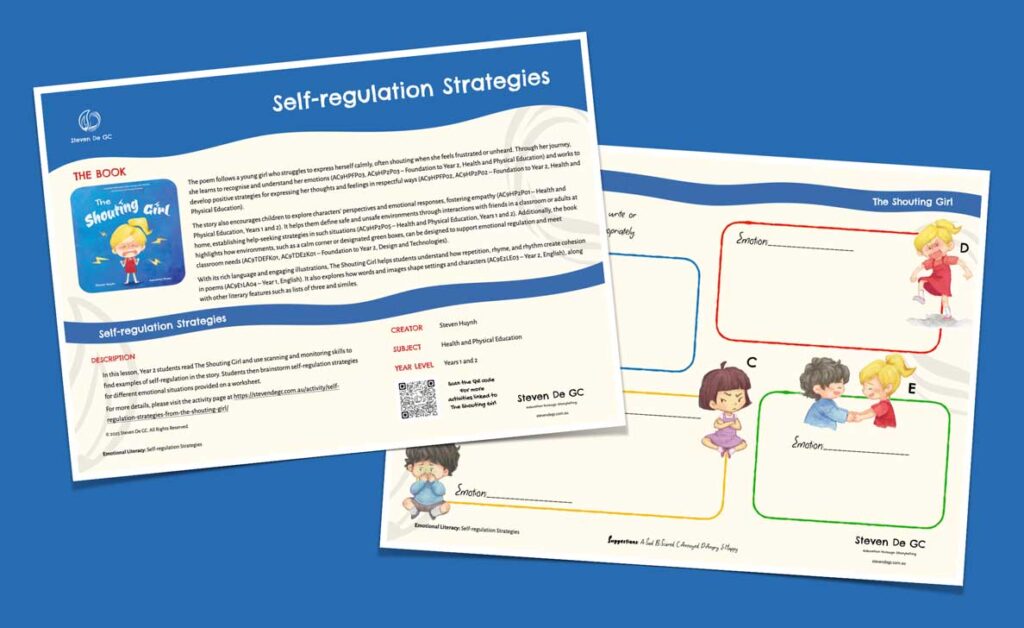

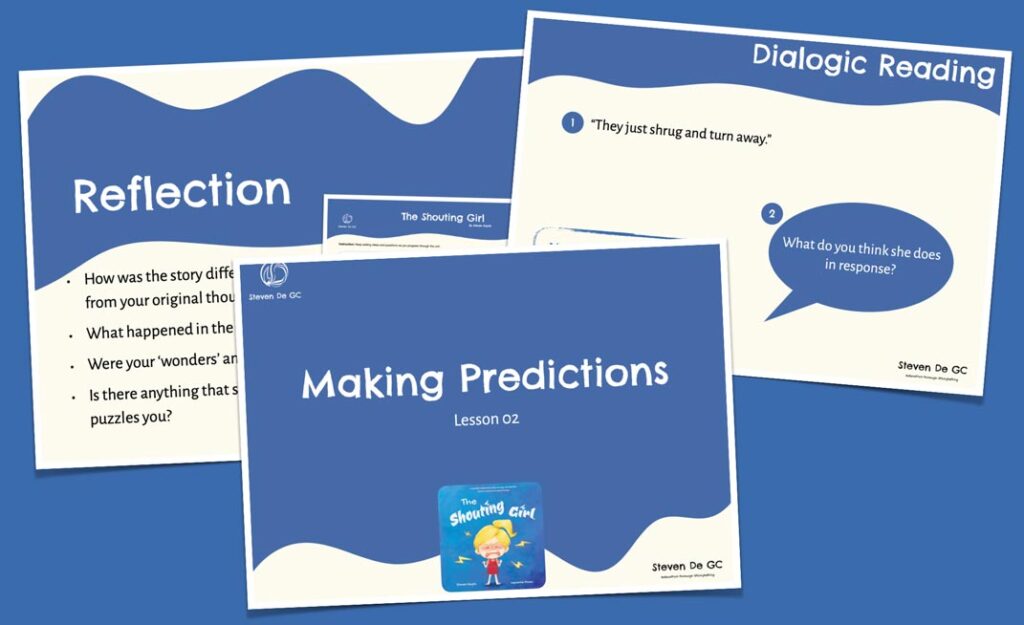
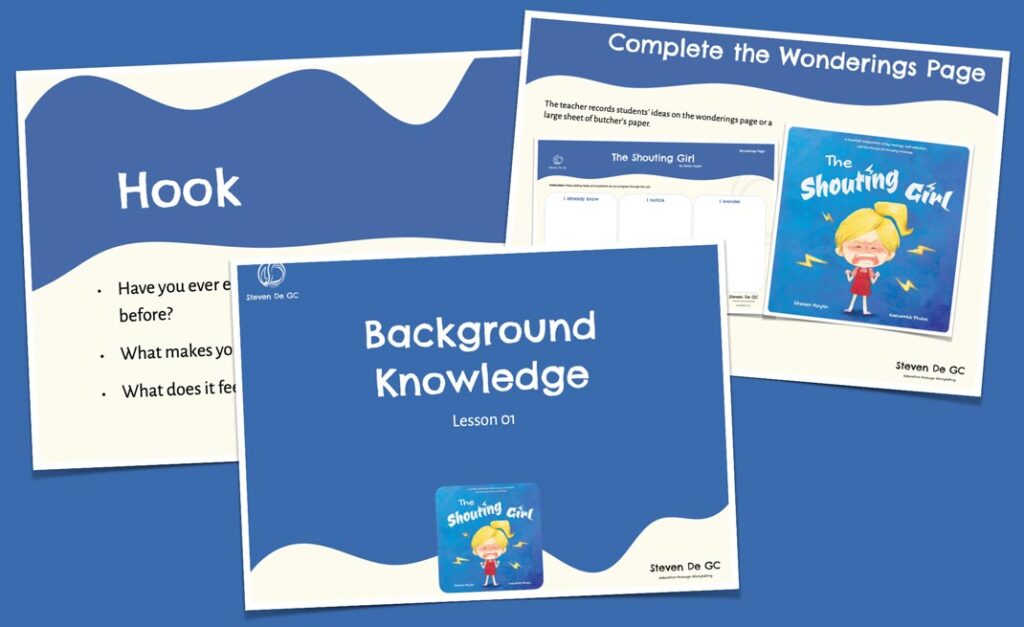

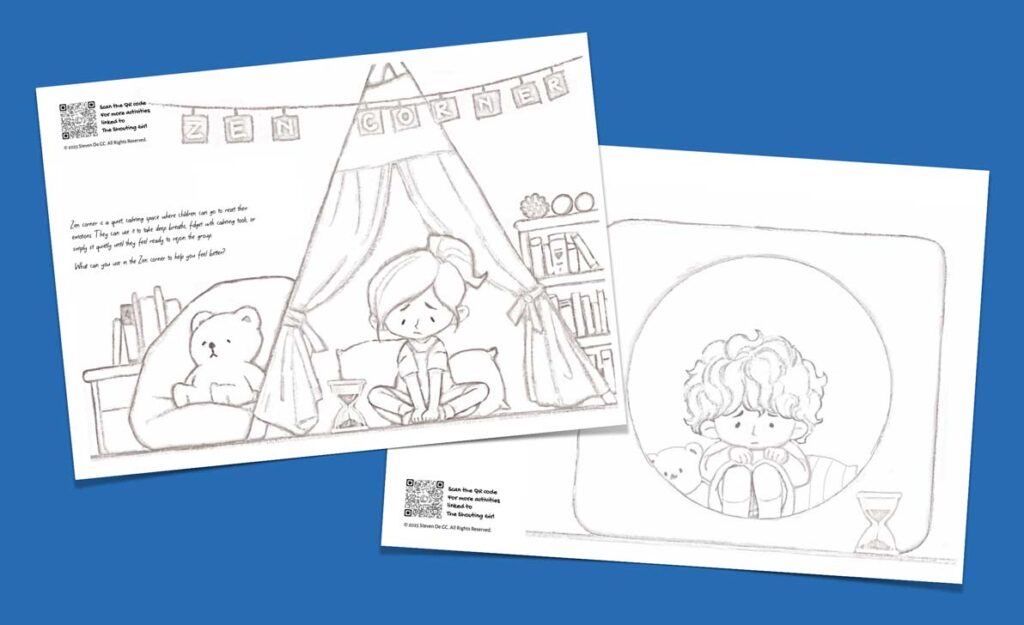
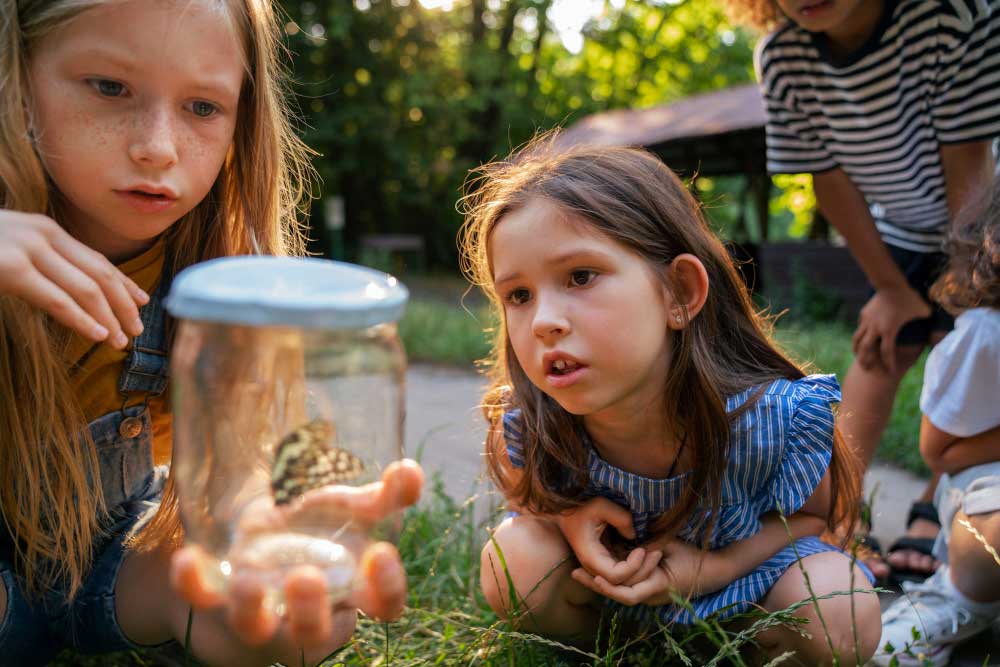
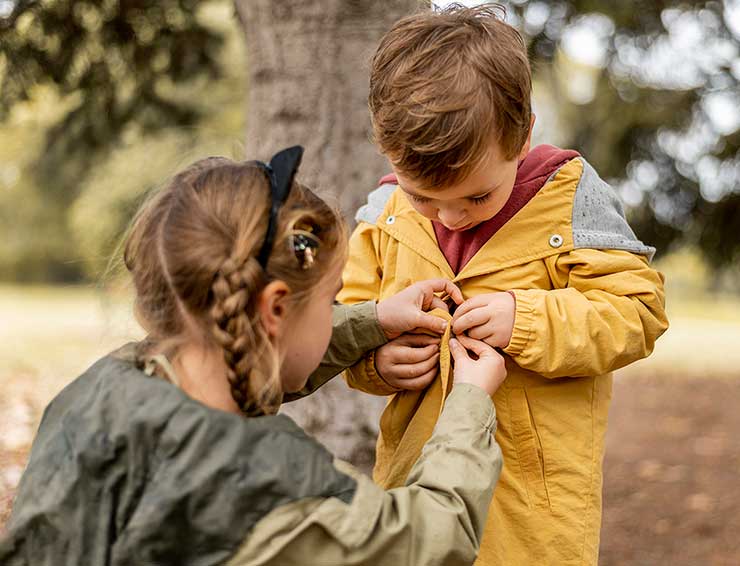

![[T4R] A Family is a Family is a Family: L2 Making Predictions [T4R] A Family is a Family is a Family: L2 Making Predictions](https://stevendegc.com.au/wp-content/uploads/2025/03/T4R-A-Family-is-a-Family-L2-Cover-1024x626.jpg)
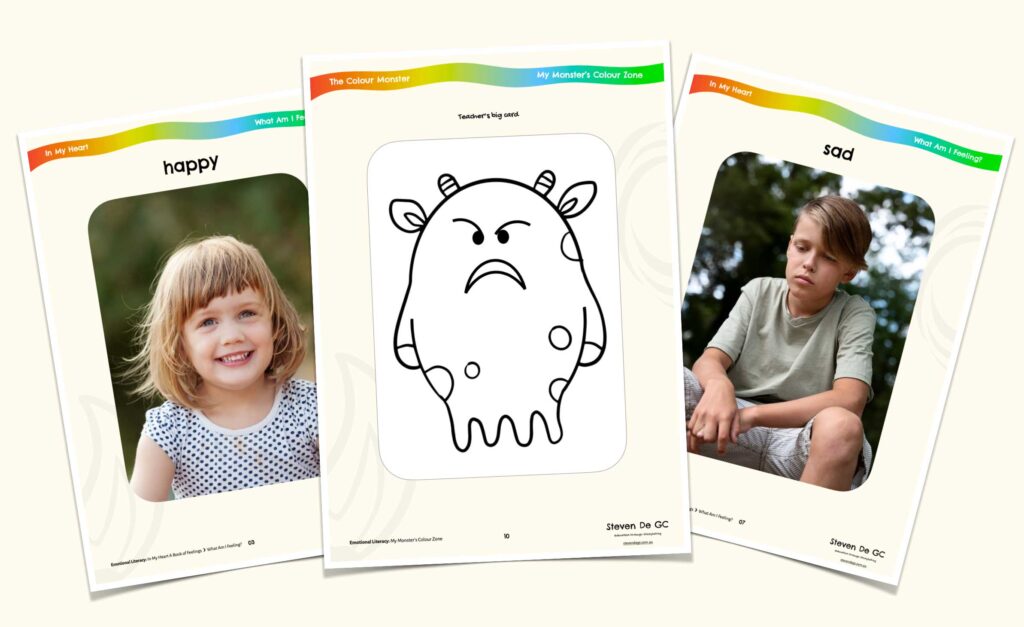
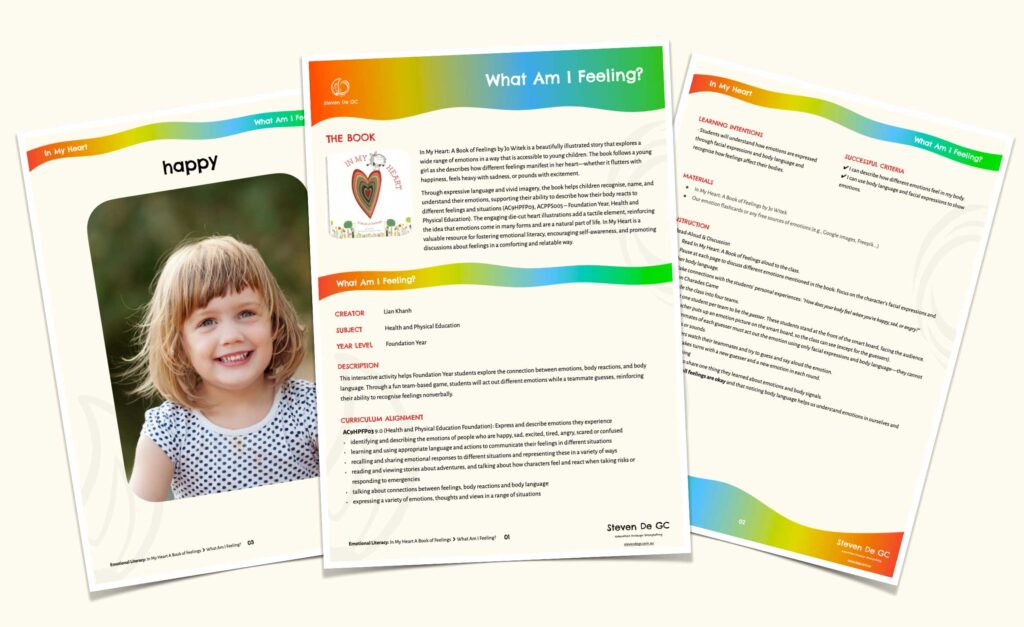
Leave a Reply